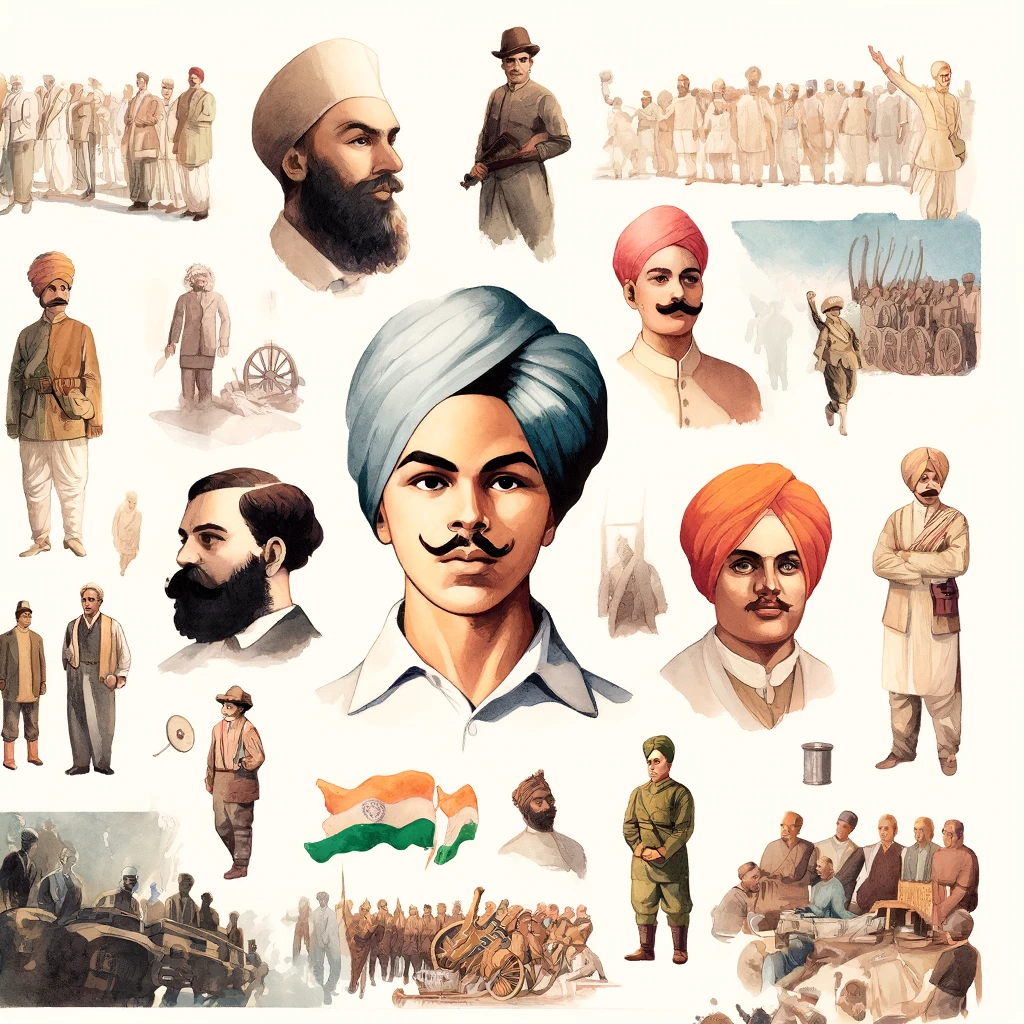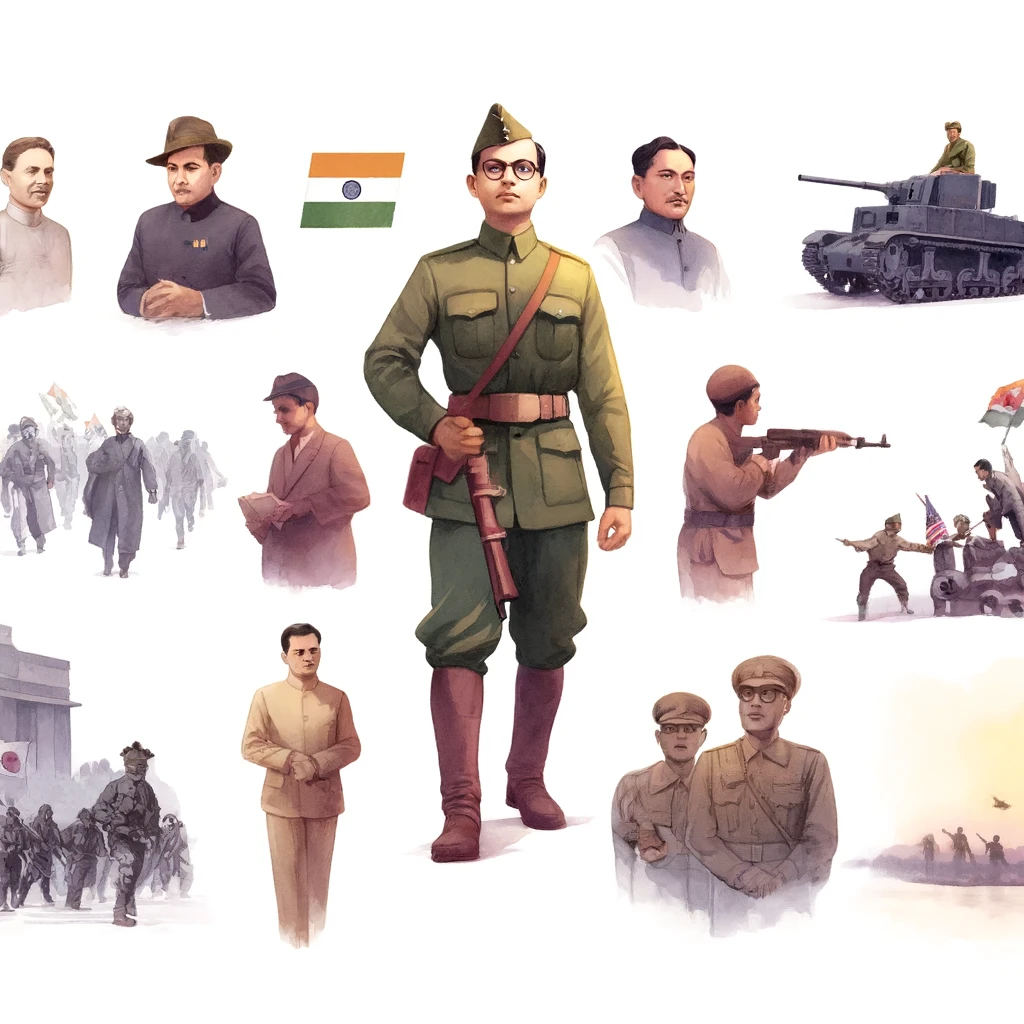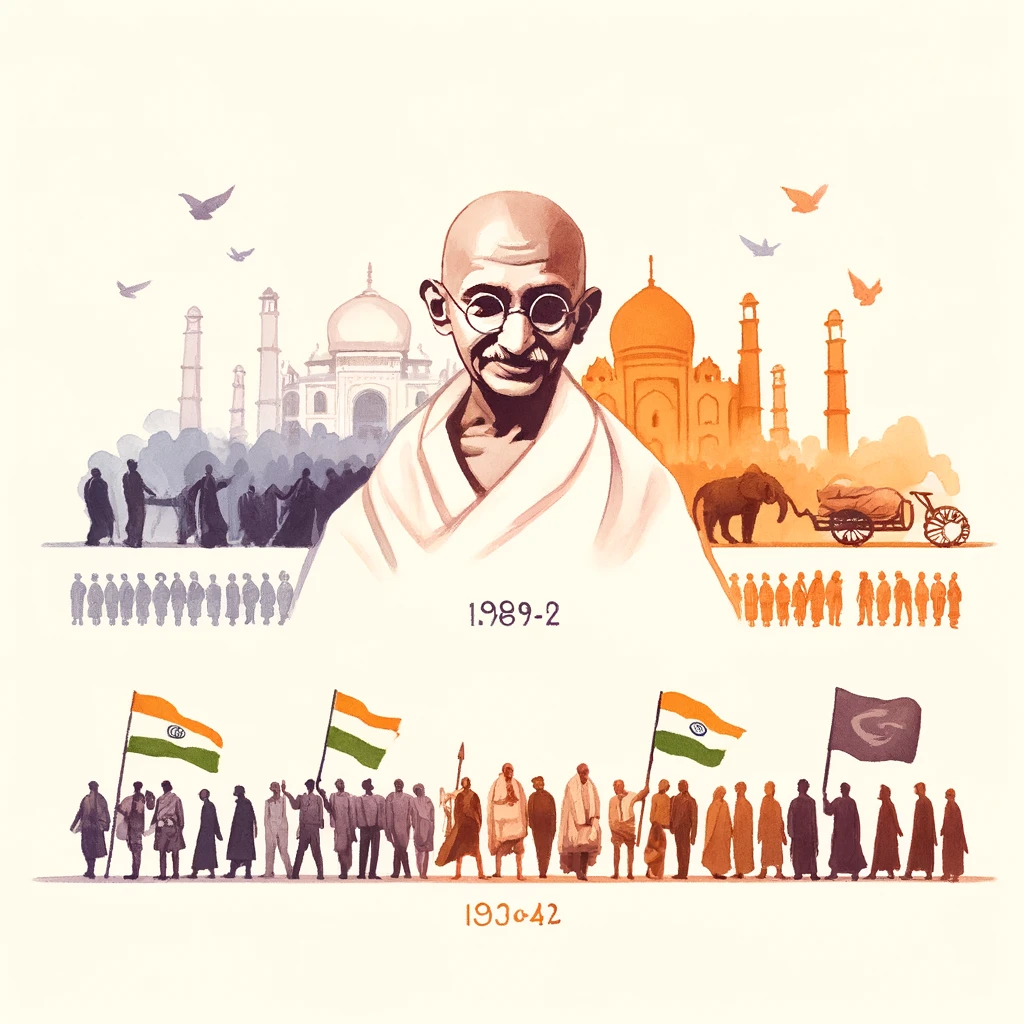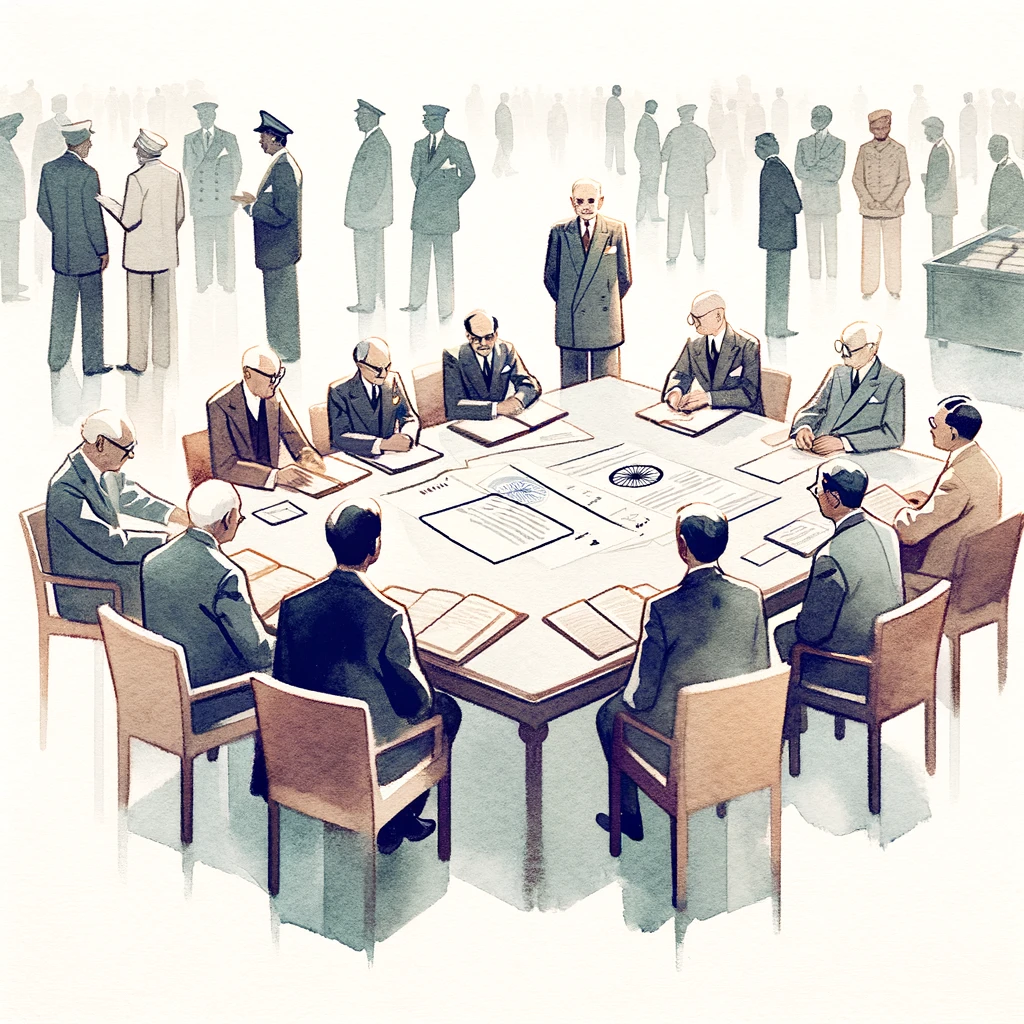From Tilak, inspiring the foundation of the movement, to Bhagat Singh and Sukhdev’s furious protests on the streets, India has a rich history of freedom fighters who played important roles in the country’s struggle for independence from British colonial rule. They fought without rest and sacrificed their lives and liberties to give meaning to the work of freedom. Freedom fighters of India struggled and sacrificed their lives to free India from British rule. The revolutionaries and activists of all different racial and ethnic backgrounds came together as one large faction, united under a common aim to abolish foreign imperialists and their colonialism in India.
Famous Revolutionary Leaders
Bhagat Singh
- Bhagat Singh was one of the most legendary figures in the entire history of the Indian freedom fight. Born in 1907 in Punjab, he was deeply influenced by the Jallianwala Bagh massacre and its succeeding repressive measures by the British.
- Singh was a member of the Hindustan Socialist Republican Association (HSRA), a revolutionary group committed to the violent overthrow of British rule.
- His notable acts include the assassination of British police officer John Saunders in 1928, mistaken for the officer responsible for the death of Lala Lajpat Rai, and the bombing of the Central Legislative Assembly in Delhi in 1929 with Batukeshwar Dutt. These acts were not targeted to involve mass killing but to make a statement.
- Indeed, Bhagat Singh was destined to be tried and then sent to the gallows in 1931 so that he might emerge as a martyr and an eternal symbol of the fight against colonialism.
Rajguru
- Shivaram Rajguru was born in 1908 in Maharashtra. He was also one of the associates of Bhagat Singh. He was also an important member of HSRA, who played a very important role in the assassination of John Saunders.
- Rajguru was reported to be highly fearless and committed to the cause of Indian independence. He believed in the utility of armed struggle to end British rule in this country.
- Along with Bhagat Singh and Sukhdev, Rajguru was arrested, tried, and sentenced to death. He was executed on March 23, 1931, in Lahore.
Sukhdev
- Sukhdev Thapar, born in 1907 in Punjab, was another prominent member of the HSRA. He was actively involved in the planning and execution of revolutionary activities.
- Sukhdev was instrumental in organizing revolutionary cells across northern India and spreading the message of resistance against British rule.
- His commitment to the cause and his role in the Saunders assassination led to his arrest and execution alongside Bhagat Singh and Rajguru.

Activities of the Ghadar Party and Indian National Army (INA)
Ghadar Party
- The Ghadar Party was founded in 1913 by Indian immigrants in the United States and Canada, primarily Punjabis. It aimed to overthrow British rule in India through armed rebellion.
- The party’s members were inspired by nationalist sentiments and were particularly incensed by the racial discrimination they faced abroad and the repressive policies of the British in India.
- During World War I, the Ghadar Party attempted to incite mutinies among Indian soldiers in the British Indian Army and planned an armed uprising. Although the movement was largely unsuccessful due to British intelligence infiltrating the group, it laid the groundwork for future revolutionary activities.
Indian National Army (INA)
- The INA was initially formed during World War II by Indian prisoners of war held by Japan. It was later reorganized under the leadership of Subhas Chandra Bose, who renamed it the Azad Hind Fauj.
- The INA aimed to overthrow British rule with Japanese support. It comprised Indian soldiers captured by the Japanese and volunteers from Indian communities in Southeast Asia.
- The INA fought alongside Japanese forces in the campaigns in Burma and Northeastern India, including the battles of Imphal and Kohima.
- Although the INA’s military campaign was ultimately unsuccessful, its existence and the subsequent trials of INA officers post-war significantly galvanized Indian nationalist sentiment.

Conclusion
Revolutionary leaders and movements thus constituted the lifeline of the Indian independence struggle. The likes of Bhagat Singh, Rajguru, and Sukhdev had come to symbolize resistance and sacrifice. The Ghadar Party, the Indian National Army, and Subhas Chandra Bose represented the multiple approaches toward the attainment of freedom from British rule. Though not many revolutionary efforts were successful, these paved the way for the momentum toward India’s independence. A study of these movements therefore gives valuable insight into the many-sided freedom struggle of India. Thus, enduring the legacy of its revolutionary leaders.
| Revolutionary Leaders UPSC Notes |
| 1. Bhagat Singh, born in 1907 in Punjab, became a seminal figure in the Indian independence movement, influenced deeply by the Jallianwala Bagh massacre. 2. Bhagat Singh was an important member of the HSRA, which supported the violent overthrow of British rule in India. 3. Bhagat Singh was executed in 1931 and became a martyr, an eternal symbol of anti-colonial resistance. 4. A close buddy of Bhagat Singh, Rajguru was born in 1908 in Maharashtra and participated in the assassination of John Saunders. His execution took place on March 23, 1931. 5. The Ghadar Party was formed in 1913 by immigrants from India in North America; the goal of the Ghadar Party was to oust the British government in India through armed rebellion. But it faced total infiltration and disruption at the hands of British intelligence. 6. Formed with Indian POWs during World War II, it was re-organized under Subhas Chandra Bose and fought against the British along with the Japanese in Burma and Northeast India. 7. Under the leadership of Bose, INA aimed at Indian liberation with the help of the Japanese and thereby turned out to be the major, though unsuccessful, military venture against British rule. |


